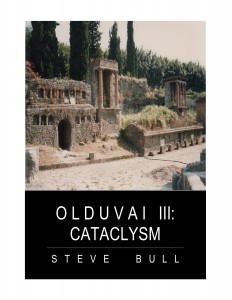Home » Posts tagged 'adaptation'
Tag Archives: adaptation
Today’s Contemplation: Collapse Cometh CXCIII—Societal Collapse, Abrupt Climate Events, and the Role of Resilience
Today’s Contemplation: Collapse Cometh CXCIII—Societal Collapse, Abrupt Climate Events, and the Role of Resilience Tulum, Mexico. (1986) Photo by author. This Contemplation comments upon and summarises two short archaeology articles on societal collapse. The first raises the increasing evidence of abrupt climate events being a precipitating factor in societal collapse over the past dozen millennia. […]
Today’s Contemplation: Collapse Cometh CXC–Beyond Collapse: Climate Change and Causality During the Middle Holocene Climatic Transition
Today’s Contemplation: Collapse Cometh CXC–Beyond Collapse: Climate Change and Causality During the Middle Holocene Climatic Transition Tulum, Mexico. (1986) Photo by author. This Contemplation comments upon and summarises a paper that considers prehistorical periods of rapid climatic transition and societal-level responses to the resulting environmental changes. I thought it interesting to review this research article […]
We’re Coming Closer to Limits of Adaptation
We’re Coming Closer to Limits of Adaptation
Guest post: Why avoiding climate change ‘maladaptation’ is vital
Guest post: Why avoiding climate change ‘maladaptation’ is vital With the delayed UN climate talks coming up this year, COP26 president Alok Sharma recently launched a “Race to Resilience” to underscore the urgency of adapting to climate change. However, in our new study – published in the journal World Development – we come to the unsettling conclusion […]
Why We’re Doomed: Our Delusional Faith in Incremental Change
Why We’re Doomed: Our Delusional Faith in Incremental Change Better not to risk any radical evolution that might fail, and so failure is thus assured. When times are good, modest reforms are all that’s needed to maintain the ship’s course. By “good times,” I mean eras of rising prosperity which generate bigger budgets, profits, tax revenues, […]
The Recession Will Be Unevenly Distributed
The Recession Will Be Unevenly Distributed Those households, enterprises and organizations that have no debt, a very low cost basis and a highly flexible, adaptable structure will survive and even prosper. The coming recession will be unevenly distributed, meaning that it will devastate many while leaving others relatively untouched. A few will actually do better […]
The Big Picture
The Big Picture Humanity has a lot of problems these days. Climate change, increasing economic inequality, crashing biodiversity, political polarization, and a global debt bubble are just a few of our worries. None of these trends can continue indefinitely without leading to a serious failure of our civilization’s ability to maintain itself. Taken together, these […]
Wayfinder: A resilience guide for navigating towards sustainable futures
Wayfinder: A resilience guide for navigating towards sustainable futures WHAT IS WAYFINDER? WHY IS IT NEEDED? HOW DOES IT WORK? What is Wayfinder? Wayfinder is a process guide for resilience assessment, planning and action in social-ecological systems. It represents the frontier in resilience and sustainability science, synthesized into a clear, coherent and hands-on approach. Encouraging a new generation […]
Mitigation, Adaptation & Suffering
Mitigation, Adaptation & Suffering In this conversation, the Climate Disobedience Center’s Tim DeChristopher looks at how the progressive movement’s strategies need to change in now that climate change’s real impacts are more obvious to the American public. He addresses the focus on carbon mitigation (policies for reduction in greenhouse gas emissions) in light of the […]
Adapt or die: Why you need more skills and less stuff
Adapt or die: Why you need more skills and less stuff Preppers have a bad reputation for hoarding gear, stocking up on a year’s-worth (or more) of food, and packing bug out bags that could supply a platoon. In almost all cases, these preppers would be screwed if there were a disaster or SHTF. Gear and supplies are […]
As We Adapt to Climate Change, Who Gets Left Behind?
As We Adapt to Climate Change, Who Gets Left Behind? A new documentary shows planning options to mitigate a new climate, but questions about the global South are largely ignored. Climate change is a global process that plays out on the ground in dramatically different ways based on where, and how, we live on that […]
Shrinking the Technosphere, Part VII
Shrinking the Technosphere, Part VII You have survived your first winter on the land. Congratulations! The worst part of the ordeal is quite possibly over. Gone are whatever addictions and expectations with which you arrived, be they internet access or coffee. Your new world consists of the few people around you, and a huge number […]
Collaboration, Adaptation and Risk: Innovate or Die
Collaboration, Adaptation and Risk: Innovate or Die Collaboration, innovation and risk are all intrinsic to adaptation. Without adaptation, every system eventually perishes once conditions change. One feature of capitalism that is rarely discussed is the premium placed on cooperation and collaboration. The Darwinian aspect of competition is widely accepted (and rued) as capitalism’s dominant force, but […]
The Essentials of Resilience in a World of Growing Chaos
The Essentials of Resilience in a World of Growing Chaos By now, it ought to go without saying that the evidence is in – after all, global warming has been recognized by scientists for decades. The accelerated release of “greenhouse gases” since the dawn of the Industrial Age is now causing accelerated warming of the planet […]



